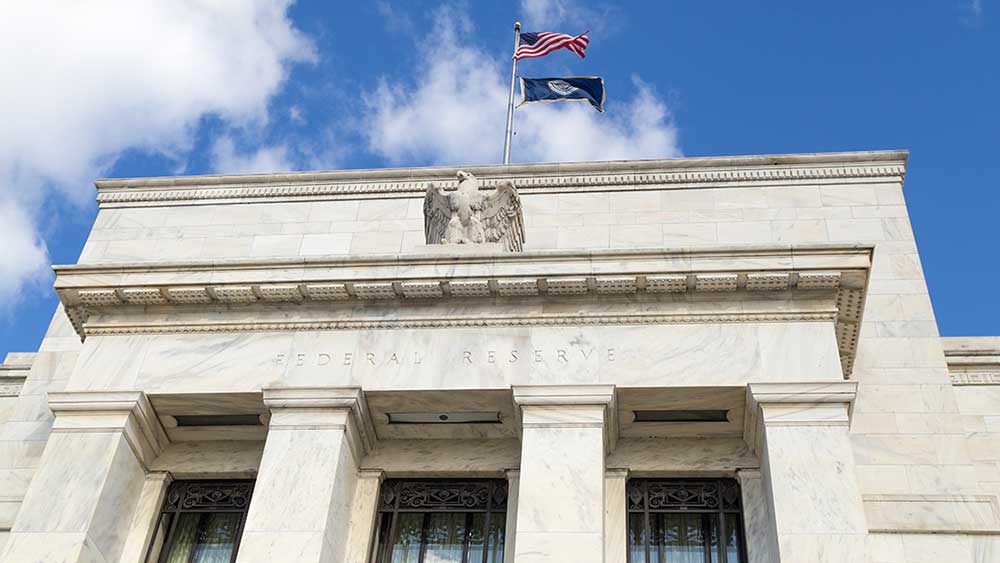The Federal Reserve hiked its key interest rate by a quarter point, keeping up its battle against inflation as the banking panic subsides. But new Fed forecasts point to just one more rate hike as ongoing concerns about bank health complicate policymakers’ plan to hold interest rates higher for longer. The S&P 500 rose after release of the Fed meeting policy statement, but turned slightly negative as Chair Jerome Powell discussed the outlook and sold off late.
X
The gist of Fed chair Powell’s remarks: The bank crisis will help tighten financial conditions because credit will be somewhat harder to come by for individuals and businesses. “Monetary policy might have less work to do” to rein in inflation, Powell said. But the Fed still is determined to sharply slow the economy and raise unemployment, meaning a brush with recession is likely.
Federal Reserve Meeting Highlights
Wednesday’s rate hike raised the federal funds target range to 4.75%-5%.
New quarterly projections show Federal Reserve policy committee members expect the Fed’s key interest rate to end 2023 at 5.1%, implying one further rate hike.
The Fed envisions the benchmark federal funds rate falling to 4.3% by the end of 2024, higher than its 4.1% forecast in December.
Every Fed meeting statement back to March 2022 had indicated a likelihood of “ongoing increases” in the policy rate. However, Wednesday’s statement dropped that language, saying instead that the Fed believes “some additional policy firming may be appropriate.”
The upshot: The Fed is nearly done hiking.
Fed projections trimmed the outlook for economic growth to 0.4% this year from 0.5% in December projections. Now the Fed expects GDP growth of 1.2% in 2024, down from 1.6% in December’s outlook. The unemployment rate is seen rising to 4.5% at the end of 2023 and 4.6% in 2024 vs. 3.6% currently.
Fed Chair Powell’s News Conference
Fed chair Jerome Powell declared that all deposits in the U.S. banking system “are safe” after decisive action by the Fed, FDIC and Treasury.
Still, Powell said subdued growth is expected and the risks to growth are “weighted to the downside.” While Powell still sees a possibility of avoiding recession, he said the tightening of bank credit could make it more challenging.
Powell said that the Fed will closely watch credit conditions as it determines the path forward for interest rates. But he said there was a “strong consensus” for hiking rates, given evidence of strong job growth and inflation to start the year.
Markets Bet On Fed Rate Cuts
After Wednesday’s Federal Reserve meeting policy statement and Powell’s comments, markets are still betting that policymakers will shift from rate hikes to rate cuts this fall. Market pricing points to a year-end federal funds target rate below 4.5%.
That’s a stark change from March 7, when Powell’s hawkish testimony before the Senate had markets pricing in a half-point hike at this week’s Fed meeting. At the time, markets expected the Fed’s key rate to reach a range of 5.5%-5.75% by September. Yet two days later, SVB Financial Group started a downward spiral that quickly infected much of the U.S. banking sector.
On Wednesday, PacWest Bancorp (PACW) said its deposits have stabilized in recent days, but not before falling 20% amid the panic started by SVB’s failure. PACW stock fell sharply Wednesday.
S&P 500 Reaction
The S&P 500 slid 1.7% in Wednesday’s volatile afternoon stock market action, after initially rallying on the Fed decision and Powell’s news conference. The S&P 500 rallied in the two days before the Fed meeting, climbing 1.3% on Tuesday, following Monday’s 0.9% gain that saw the index regain its 200-day moving average.
The 10-year Treasury yield fell 16 basis points to 3.45% after the Fed policy news. The 10-year yield has given up most of its bounced off bank-crisis lows.
The 2-year Treasury yield, which is more closely tied to the near-term Fed rate outlook, tumbled 234basis points to 3.98%.
Investors have been weighing both the outcome of the Fed meeting and whether the banking crisis could turn out to be good news for stocks.
“Arguably, it would be better for the broader stock market if growth slowed because banks became more conservative in their lending than if it slowed because the Fed had to raise rates to over 6%,” BCA Research strategists led by Peter Berezin wrote on March 16.
The economy would slow in either case, BCA wrote. But in a banking-led slowdown, “the discount rate applied to earnings would not be as high,” which would be better for stock valuations. Yet, the analysts acknowledge that growth might not just slow but collapse. That could happen if the Fed keeps policy too tight as credit becomes harder to obtain.
Through Tuesday, the S&P 500 had climbed 11.9% from its bear-market closing low on Oct. 12, but remained 16.55% off its record closing high in January 2022.
Be sure to read IBD’s The Big Picture each day to stay in sync with the market’s underlying trend and what it means for your trading decisions.
YOU MAY ALSO LIKE:
These Are The 5 Best Stocks To Buy And Watch Now
Join IBD Live Each Morning For Stock Tips Before The Open
IBD Digital: Unlock IBD’s Premium Stock Lists, Tools And Analysis Today
How To Make Money In Stocks In 3 Simple Steps
Futures Rise After Fed-Led Sell-Off; Six Titans Mask Market Weakness
Image and article originally from www.investors.com. Read the original article here.

